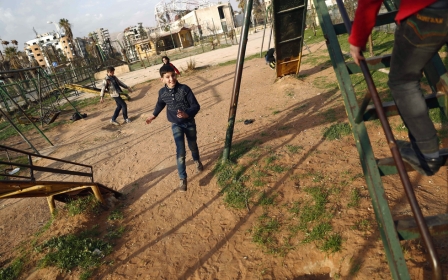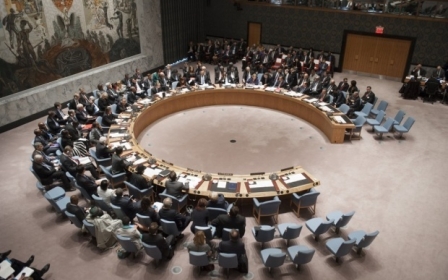UN aid enters besieged areas as rights chief warns of 'thousands' starving

Aid workers on Monday made the first delivery of desperately needed assistance since the start of Syria's fragile ceasefire, as the UN rights chief said that thousands may have starved to death during sieges affecting nearly half a million people.
Twenty trucks carrying blankets and hygiene supplies entered rebel-held Moadamiyet al-Sham, encircled by government forces, and another 31 were to follow later.
"The deliberate starvation of people is unequivocally forbidden as a weapon of warfare. By extension, so are sieges," UN rights chief Zeid Ra'ad al-Hussein said, warning that "thousands of people may have starved to death".
Speaking at a session of a the UN Human Rights Council in Geneva on Monday, Hussein also warned against participants in the Syria war justifying atrocities on the basis of fighting “terrorism”.
"We must not throw our principles and our reason overboard because we are petrified by the grotesque behaviour of a few thousand fanatics,” he said.
His office later issued a correction saying he had meant that thousands were at risk of starving to death, rather than indicating that they already had.
UN humanitarian coordinator Yacoub El Hillo said the UN hoped to take advantage of the first major truce in five years of conflict to distribute supplies to an extra 154,000 people living in besieged areas over the next five days.
A successful truce would also create a more favourable backdrop for peace talks, which collapsed in acrimony in early February as a Russian-backed government offensive in northern Syria caused tens of thousands to flee.
UN envoy Staffan de Mistura aims to relaunch the talks on 7 March if the ceasefire lasts and more aid is delivered.
The main opposition grouping on Sunday described the ceasefire as "positive" but lodged a formal complaint with the UN and foreign governments about breaches.
"We have violations here and there, but in general it is a lot better than before and people are comfortable," said Salem al-Meslet, spokesman for the Saudi-backed High Negotiations Committee.
Meslet said the opposition would like to see the truce "last forever" and that it was the "responsibility of the United States to stop any violations".
An HNC letter to UN Secretary General Ban Ki Moon accused the Syrian government and its allies of committing "24 violations with artillery shelling and five ground operations... in 26 areas held by the moderate opposition".
It said the breaches had killed 29 people and wounded dozens.
The HNC has said it did not receive any maps of areas included in the ceasefire or documents explaining the monitoring mechanism.
Syria's al-Watan newspaper, which is close to the government, said on Sunday that those maps were still being "kept secret".
The ceasefire does not apply to territory held by the Islamic State group and al-Qaeda's affiliate, the Nusra Front.
IS last week cut the government's sole supply route to territory it holds in and around second city Aleppo.
After several days of deadly clashes, the army succeeded in reopening it on Monday, the Syrian Observatory for Human Rights said.
At least 26 pro-government fighters and 14 IS fighters were killed in the fighting around the town of Khanasser, the Britain-based monitoring group said on Sunday.
'Inevitable' setbacks
The Observatory reported nine Russian air strikes on a town in the central province of Hama early on Monday but had no immediate word on any casualties.
Washington urged patience from all sides to give the truce a chance to firm up.
"Setbacks are inevitable," a senior US administration official said.
"Even under the best of circumstances, we don't expect the violence to end immediately. In fact, we are certain that there will continue to be fighting, in part because of organisations like ISIL (Islamic State) and Al-Nusra."
There has been no let-up in the US-led air campaign against IS since the truce went into effect.
The coalition said that on Sunday it carried out 12 strikes against the group in Syria, four of them around the town of Tal Abyad on the Turkish border where IS has been attempting to regain territory from US-backed Kurdish forces.
Middle East Eye propose une couverture et une analyse indépendantes et incomparables du Moyen-Orient, de l’Afrique du Nord et d’autres régions du monde. Pour en savoir plus sur la reprise de ce contenu et les frais qui s’appliquent, veuillez remplir ce formulaire [en anglais]. Pour en savoir plus sur MEE, cliquez ici [en anglais].




